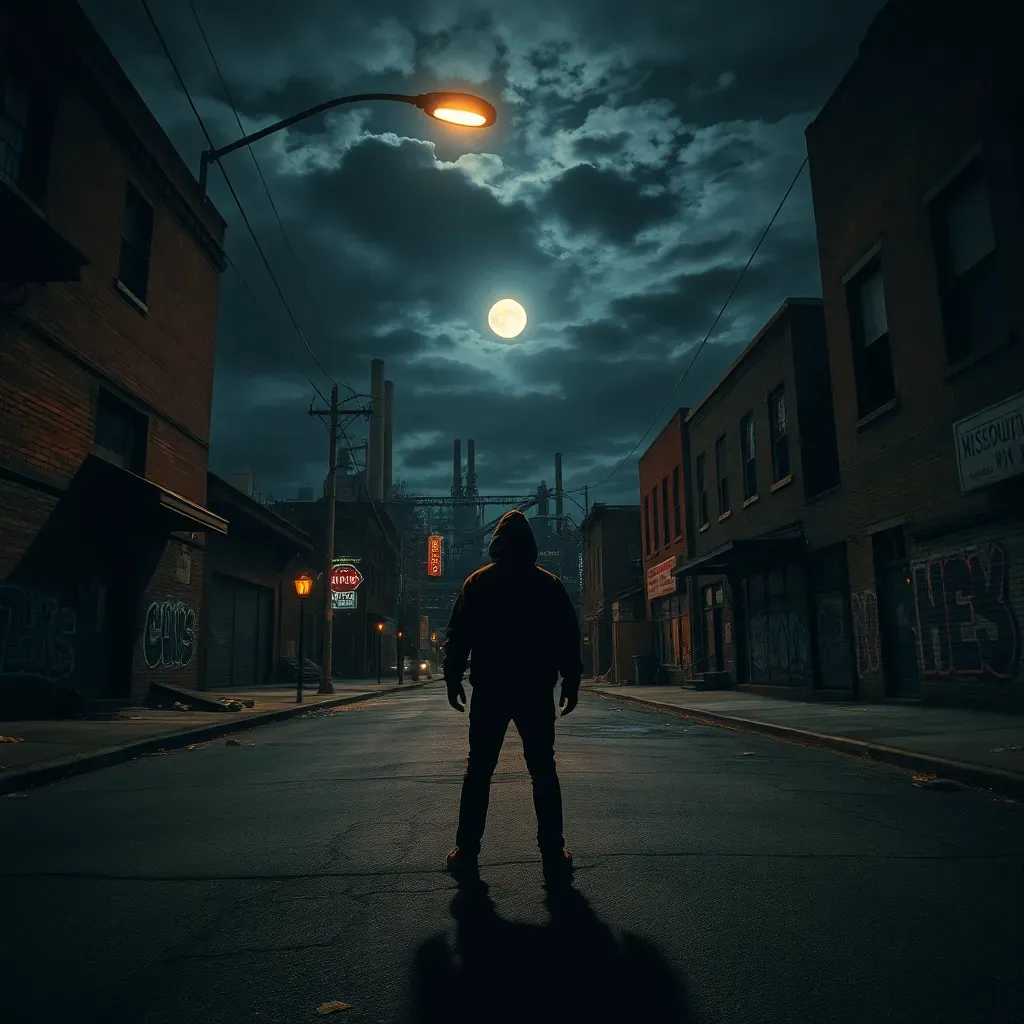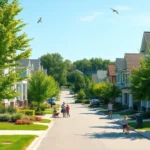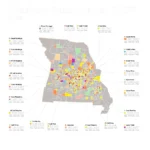Most dangerous cities in Missouri: shocking crime hotspots revealed
- Missouri’s Crime Landscape: What Makes a City Dangerous?
- Top Most Dangerous Cities in Missouri: The Full Breakdown
- Deep Dive: St. Louis and Kansas City – Missouri’s Crime Giants
- Other Noteworthy Risky Towns in Missouri: Springfield, Joplin, and Beyond
- Crime Hotspots: What Streets, Parks, and Buildings Tell Us
- Community Voices: What People Really Say About Missouri’s Dangerous Cities
- Practical Tips for Staying Safe in Missouri’s Most Dangerous Cities
- Comparing Missouri’s Dangerous Cities: Crime Rates, Police Efforts, and Living Conditions
- Movies, Series, and Media Portrayals: How Missouri’s Dangerous Cities Are Seen
- The Road Ahead: Crime Reduction Strategies and Community Hope
- What You Need to Know About Missouri’s Most Dangerous Cities
- Sources and References
Missouri’s Crime Landscape: What Makes a City Dangerous?
Understanding what makes a city risky is key to grasping Missouri’s crime reality. When we talk about violent crime, we mean serious offenses like murder, aggravated assault, robbery, and rape. These crimes directly threaten people’s safety and shape how locals feel about their neighborhoods. Aggravated assault is especially common in some Missouri cities, involving attacks that cause serious injury or use weapons.
Crime rates are usually measured per 100,000 people, using data from the FBI and local police reports. These numbers give a snapshot of how often crimes happen but don’t always capture the full story behind the scenes. For example, a city might have a high crime rate in certain neighborhoods but be relatively safe elsewhere.
Several factors contribute to higher crime rates in Missouri’s cities. Economic hardship plays a big role — areas with poverty, unemployment, and limited opportunities often see more crime. Gangs and drug activity also fuel violence and property crimes. Urban infrastructure matters too: poorly lit streets, lack of cameras, and fewer police patrols can make some places feel sketchy or risky. It’s important to note the difference between a “dangerous city” overall and specific rough neighborhoods within otherwise safer cities. Not every street or block in a city with high crime is unsafe, but locals often warn about certain dodgy spots to avoid, especially at night.
Top Most Dangerous Cities in Missouri: The Full Breakdown
Here’s a detailed look at Missouri’s cities with the highest crime rates, based on the latest FBI and local data. This list includes places like St. Louis, Kansas City, Springfield, Joplin, Columbia, Independence, St. Joseph, Jefferson City, Cape Girardeau, and Blue Springs. Each city has its own challenges and unique vibe shaped by its crime patterns.
| City | Violent Crime Rate (per 100,000) |
Murder Rate (per 100,000) |
Aggravated Assault Rate (per 100,000) |
Robbery Rate (per 100,000) |
Local Vibe |
|---|---|---|---|---|---|
| St. Louis | 1,470 | 60 | 900 | 300 | Shady streets, frequent sirens, crowded bars, and some rough neighborhoods |
| Kansas City | 1,480 | 55 | 920 | 310 | Dicey blocks, busy corners with police presence, but some messed-up alleys |
| Springfield | 1,100 | 30 | 700 | 200 | Shady parks and dodgy neighborhoods, with ongoing community efforts |
| Joplin | 950 | 25 | 600 | 150 | Risky streets, some wild corners, but quieter than bigger cities |
| Columbia | 900 | 20 | 580 | 140 | Sketchy blocks near nightlife, but generally mixed safety levels |
| Independence | 850 | 18 | 560 | 130 | Dodgy neighborhoods, some risky streets, but active police patrols |
| St. Joseph | 800 | 15 | 540 | 120 | Quiet areas mixed with rough spots, local warnings about certain blocks |
| Jefferson City | 750 | 12 | 500 | 110 | Shady corners near downtown, but mostly calm residential zones |
| Cape Girardeau | 700 | 10 | 480 | 100 | Risky streets in some neighborhoods, but growing community safety programs |
| Blue Springs | 650 | 8 | 450 | 90 | Mostly safe, with a few dodgy areas to watch out for |
Each city’s crime scene is shaped by its streets, neighborhoods, and daily life. Locals often describe some areas as shady or messed-up, pointing to places with poor lighting, frequent police sirens, and crowds that can feel wild or dicey. Parks and bars sometimes become hotspots for incidents, while alleys and corners might be known for occasional trouble.
Deep Dive: St. Louis and Kansas City – Missouri’s Crime Giants
St. Louis and Kansas City stand out as Missouri’s biggest crime hubs. According to recent FBI data, St. Louis ranks #2 and Kansas City #6 among the most dangerous cities in the U.S. Their violent crime rates hover around 14.7 to 14.8 incidents per 1,000 people, with aggravated assaults leading the way.
Homicide numbers tell a tough story. Kansas City hit a record 182 homicides in 2023, but thanks to new police strategies, that dropped to 144 in 2024 and is trending lower in 2025. St. Louis has also seen high homicide rates, with neighborhoods facing ongoing challenges from gangs, gun violence, and drug activity.
Police departments in both cities have launched crime plans focusing on community policing, increased patrols, and outreach programs. These efforts aim to reduce gun violence and improve trust between officers and residents.
Residents often describe the “mean streets” of these cities as places where traffic is heavy, sidewalks show signs of wear, and buildings sometimes bear the marks of vandalism. Shops and homes in certain neighborhoods have extra security measures like cameras and fences. The sounds of sirens, barking dogs, and crowds add to the city’s intense atmosphere.
“People here know which blocks to avoid after dark,” says a longtime St. Louis resident. “It’s not about fear all the time, but you gotta stay alert, especially around certain parks and alleys.”
Other Noteworthy Risky Towns in Missouri: Springfield, Joplin, and Beyond
Springfield ranks #14 on some lists of Missouri’s most dangerous cities. Locals mention shady parks and dodgy neighborhoods where incidents happen more often. Community groups are working hard to improve safety, but some areas remain gnarly and dicey.
Cities like Joplin, Columbia, and Independence also face challenges. Stories from residents talk about wild alleys, sketchy blocks, and occasional trouble spots. While these places aren’t as intense as St. Louis or Kansas City, they still have areas where caution is advised.
Some neighborhoods in these towns have less police presence at night and suffer from poor lighting or aging infrastructure. Locals often share tips on which streets or corners to avoid, especially after dark.
Crime Hotspots: What Streets, Parks, and Buildings Tell Us
Certain streets, parks, bars, and neighborhoods tend to attract more crime. Poor urban design plays a role — places with low lighting, few cameras, and limited police patrols often feel messed-up or wild. Fences and walls can sometimes block visibility, creating risky spots.
Traffic patterns matter too. Busy corners with lots of cars, buses, and trains can be both a blessing and a curse. Crowds might deter crime, but they can also hide incidents or make it easier for criminals to blend in.
Everyday sounds like sirens, phones ringing, dogs barking, and crowds chatting shape how safe a place feels. In some neighborhoods, frequent sirens signal ongoing trouble, while in others, quiet streets at night offer a safer vibe.
Community Voices: What People Really Say About Missouri’s Dangerous Cities
Reddit threads and local forums reveal a mix of fear, frustration, and hope among Missouri residents. One user notes, “Certain parts of Kansas City feel risky after dark, but community events help bring people together.” Another shares, “St. Louis has its shady spots, but lots of folks are working hard to change that.”
Interviews with locals highlight how police response varies by neighborhood, with some areas seeing more patrols and others less. Many emphasize the importance of neighborhood watch groups and staying aware of surroundings.
These voices add depth beyond statistics, showing how real people experience and cope with crime daily.
Sources: Reddit Missouri Forum, KCTV5 News

Practical Tips for Staying Safe in Missouri’s Most Dangerous Cities
- Stay in well-lit areas and avoid risky neighborhoods, especially at night.
- Be aware of your surroundings — watch for dodgy corners, alleys, and blocks.
- Use community resources like neighborhood watch groups and local safety apps.
- If you feel unsafe, head to busy places like shops or parks with good lighting.
- Keep emergency contacts handy and know the locations of nearby police stations.
- Protect your home and car with security cameras, alarms, and good lighting.
- Engage with local events to build connections and stay informed about safety updates.
Comparing Missouri’s Dangerous Cities: Crime Rates, Police Efforts, and Living Conditions
| City | Violent Crime Rate | Police Force Size | Crime Prevention Programs | Poverty Rate | Urban Infrastructure Quality | Living Safety Pros & Cons |
|---|---|---|---|---|---|---|
| St. Louis | High | Large | Extensive community policing | Above average | Mixed; some poor lighting & roads | Pro: vibrant culture; Con: shady neighborhoods |
| Kansas City | High | Large | New gun violence reduction plans | Above average | Improving but some messed-up areas | Pro: active police; Con: dicey blocks |
| Springfield | Moderate | Medium | Growing outreach programs | Average | Fair; some rough spots | Pro: community efforts; Con: risky parks |
| Joplin | Moderate | Small | Limited | Average | Mostly good | Pro: quieter; Con: some wild alleys |
Movies, Series, and Media Portrayals: How Missouri’s Dangerous Cities Are Seen
Popular culture often paints St. Louis and Kansas City as gritty, crime-filled places. Movies and TV shows highlight the mean streets, gang activity, and urban struggles. While these portrayals capture some truths, they can exaggerate or overlook the positive sides.
This media image affects tourism and local pride. Some residents feel frustrated by the shady reputation, while others see it as a call to action. It’s important to separate fact from fiction and understand that these cities have vibrant communities working hard to improve safety and quality of life.
The Road Ahead: Crime Reduction Strategies and Community Hope
Missouri’s cities are not standing still. Police departments are rolling out new crime prevention plans focusing on gun violence reduction, community policing, and better patrols. Neighborhood watch groups and local organizations play a big role in building safer environments.
Some neighborhoods have seen real improvements, with fewer incidents and more community events. Challenges remain, especially in areas with economic hardship and aging infrastructure. But residents, businesses, and officials are working together, showing resilience and hope.
What You Need to Know About Missouri’s Most Dangerous Cities
To wrap up, Missouri’s most dangerous cities like St. Louis and Kansas City face complex crime challenges rooted in social and economic issues. Other towns like Springfield and Joplin also have risky neighborhoods worth watching.
Understanding crime rates, local vibes, and police efforts helps residents and visitors stay safe. Real stories and community voices add depth beyond numbers. Staying informed, cautious, and involved is key to navigating these cities wisely.
Sources and References
What do you think about the safety in Missouri’s cities? Have you experienced any sketchy or risky spots yourself? How would you like to see these communities improve? Share your thoughts, stories, or questions below — your voice matters!
 Safest cities in Missouri: uncover surprising hidden gems
Safest cities in Missouri: uncover surprising hidden gems Crime rate by city in Missouri 2025: which places will shock you most?
Crime rate by city in Missouri 2025: which places will shock you most?Si quieres conocer otros artículos parecidos a Most dangerous cities in Missouri: shocking crime hotspots revealed puedes visitar la categoría Missouri.

Leave a Reply